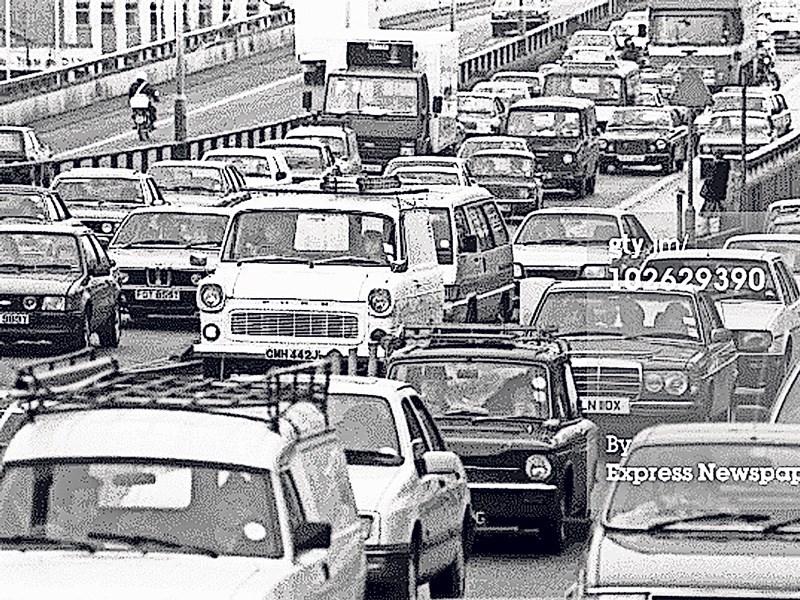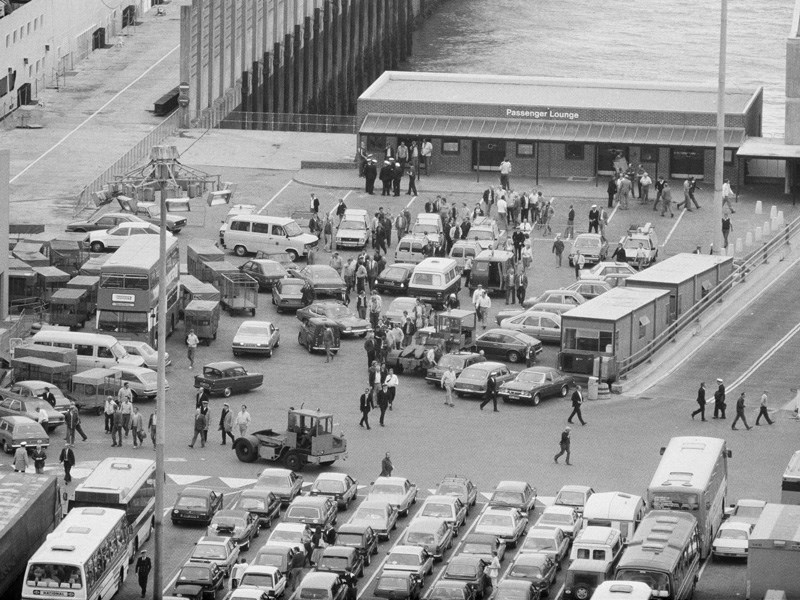Britain in 1984 was very different from George Orwell’s nightmare vision. Or was it?
As 1983 drew to a close, thought turned to how life in the UK in 1984 would compare with the grim portrait of a totalitarian Britain presented in George Orwell’s dystopian science fiction novel. Orwell chose 1984 as the title of his novel because he was presenting the satirical flip side of life in 1948, the year during which he wrote most of it. Nevertheless, numerous catchphrases and concepts from the book had already been absorbed into popular culture: ‘Big Brother’, ‘The Ministry of Truth’, ‘thoughtcrime’, ‘doublethink’ and the unimaginable horrors awaiting within ‘Room 101’.
When the chimes of Big Ben struck 12 (or should that be 13?) on 31 December 1983, there were plenty of mutterings about Big Brother keeping an eye on us, if not through our shiny new Radio Rentals colour telly and newfangled VCR, then maybe through the CCTV cameras that were already creeping onto our streets. Fortunately, the UK’s first roadside speed cameras were still seven years away, otherwise we’d probably have immediately retired to a convenient bunker to await the inevitable.
In those days, 2014 seemed a far-off fantasy, well able to take care of itself – we had our own more immediate concerns to worry about. Most of the City of London’s movers and shakers were too busy with wealth-generation to worry about such trivia. By the roar of their Guard’s Red Porsche Carrera (and the twang of their matching braces) shall ye know them – a couple of years later, Harry Enfield would immortalise the yuppies’ conspicuous affluence with his ‘Loadsamoney’ character in the Saturday Live sketch show.
Whatever the financial sleights-of-hand of City types, some might say their biggest crime was to be responsible for transforming the Porsche (particularly the 911) from a hardcore enthusiast’s choice into a rolling status symbol for everyman (or woman). Lower down the automotive pecking order, the seeds of another revolution were afoot. The Golf GTI had appeared in 1975, but the hot hatch revolution needed a little extra heat to achieve lift-off. Then, in 1983, along came the Golf MkII, hot on the heels of the stylish Peugeot 205 and the all-white GTE version of the Vauxhall Astra. Both the Pug and the Golf spawned GTI versions in 1984, followed by the globular Astra MKII range, while the previously rather agricultural Escort XR3 gained fuel injection and the Fiat Uno got a turbo. The stage was set for the hot hatch to replace the traditional, leaky British sports car, once and for all.
Striking Out
By 1984, Margaret Thatcher was a year into her second term as Prime Minister and her head-on confrontation with Arthur Scargill and the National Union of Mineworkers was the long-running political saga of the year. But the industrial unrest wasn’t only at the pithead. In the same year, there were transport strikes, factory strikes (including BL, of course) and, as our main picture shows, also the occasional strike by dock workers, many coming out in sympathy with the miners. This one’s at the port of Dover on 1 September, with an atmosphere of ‘some day, one day’ among the orderly lines of vehicles waiting patiently to travel up the ramp to the ferry. Their formation contrasts with the haphazard arrangement facing them, with some vehicles caught up in the strike, some perhaps belonging to the strikers. There’s certainly a wide range of vintages and social standing among them, from a smart Cavalier Sports Hatch and Granada MkII to an Austin A35 van and Reliant Regal.
Though most of the frustrated travellers are probably on a late summer break, we imagine some are heading for the continent on business. In the days before email, and with plenty of new European business opportunities in an EU that still focused on commerce, communication with overseas prospects was by telephone, fax machine or by jumping in the car and going for a one-to-one meeting. The first budget airlines were still a decade away, although 1984 marked the year the government gave the official go-ahead to develop Stansted as London’s third major international airport.
There was also the thrill of driving on roads still mainly populated by that nation‘s makes of car – Renaults and Citroëns in France and Opels, Mercedes-Benzes and BMWs in Germany – as shown by the UK-centric contingent waiting to board, apart from the stray Renault Fuego. All that was about to change. Nissan was planning a UK factory in Tyne and Wear, from which it would export cars around the world. Supported by Margaret Thatcher, the new factory symbolised a shift in UK car production.
Underlying the industrial unrest was a move towards replacing factories that made things with shiny new industries that simply provided a service. Pushing that along was the arrival of the personal computer at home and at work. In 1980, the world had access to about a million computers; four years later, there were more than 30 million of them on the planet. In less than a decade, the internet, email and e-commerce would revolutionise global business.
That same computing power would also transform the factories that did survive, particularly in the car industry. At Vauxhall’s new Ellesmere Port plant, for example, a right hand drive Astra could be followed down the track by a left-hand drive Opel Kadett and then a Holden bound for Australia, watched over by a tenth of the number of people previously needed to build a single type of car.
Where do we go from here?
By 1984, Britain’s roads were clogging up. So, pile-ups meant it was time for a chat. Despite numerous industrial problems, UK car factories turned out around 1,750,000 cars in 1984, with the Ford Escort topping the charts, followed by the Cavalier and Fiesta. Between them, these three marques accounted for 415,350 cars on the road. Of course, all these new vehicles had to go somewhere and, as our May 1984 photo shows, sometimes there wasn’t the infrastructure to cope, especially after an accident up ahead on a still-damp road (in this case, the A12 Brentwood Bypass).
Judging by the ambulance, it looks like there’s been another prang in the queue itself. With no sign of anything moving in the near future, there’s time to go for a stroll, talk about last night’s TV and maybe go for a comfort break in those handy bushes up the embankment. With Dagenham just up the road, it’s not really surprising that there are Cortinas, Granadas and Escorts galore. There are also some ‘foreigners’ though – the 2CV looks to be on Dutch plates – and even a few Continentals. We can see four Japanese cars – including a Colt Mirage followed by a Honda Civic disappearing on the other carriageway.
The road probably still has its fair share of jams today, but a stroll would be less pleasant, with a double row of Armco in the central reservation. They seem to have done some road widening in the past 30 years, though, so at least the emergency vehicles should be able to get through more easily.


